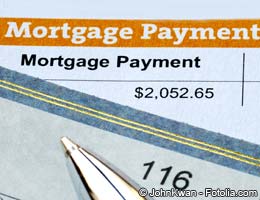 |
| How to challenge a low appraisal |
Appraisal complaints have risen in recent years, particularly since home values began plummeting in 2007 and the Home Valuation Code of Conduct took effect in May 2009. But the experts say this isn't the first real-estate cycle in which contract prices don't often match an appraised value.
Why appraisals can come in low
A low appraisal is not necessarily wrong, but it does create a situation in which a lender may not approve the loan. Simply stated, appraisers compare the value of a home with the comparable properties, or "comps," in the surrounding area.
Buyers and refinancers often run into trouble when lenders use an appraisal management company to hire an appraiser who doesn't know the local nuances that could affect home values. In markets plagued by foreclosures or short sales, the surrounding comps can weigh down the price of a home in good standing. Or, if there have been few home sales in a given neighborhood, appraisers may be forced to look for comps in surrounding areas where market conditions and the homes may be different.
Appraisals are a moving target and are based on closed sales, which can be a problem when there are few closed sales to use for comparable properties.
While homebuyers and homeowners cannot control a property appraisal, they can influence and challenge it if need be.
Educate the appraiser
I recommend that [real-estate agents] and homeowners prepare written materials for an appraiser that include information about home improvements and anything else they know about the property that can improve its value. This can improve the chances for a higher appraisal.
It is a good idea that sellers be present at an appraisal. While lenders are held at arm's length and cannot directly communicate with an appraiser, real-estate agents, buyers and sellers are allowed to talk to the appraiser. Agents can present the appraiser with information on comparable sales and how they came up with their sale price.
How to challenge a low appraisal
An appraisal dictates how much money lenders are willing to lend to a borrower. If a home's value is determined to be less than the preapproved loan amount, the lender cannot approve the loan. Buyers have the following five options when challenging a low appraisal:
1. Cancel the contract. Short says that almost all sale contracts today are written with an appraisal contingency that allows buyers and sellers to cancel the contract if the appraisal comes in too low.









 Many borrowers missed the record-low mortgage rates seen earlier this year, but they still have a chance to grab low rates this spring.
Many borrowers missed the record-low mortgage rates seen earlier this year, but they still have a chance to grab low rates this spring.

 Want to be the seller who goes to market instead of the one who stays home? The difference might be a few of the things you do before you plant that "for sale" sign.
Want to be the seller who goes to market instead of the one who stays home? The difference might be a few of the things you do before you plant that "for sale" sign. Step one to getting your house market ready: Break out the cleaning supplies.
Step one to getting your house market ready: Break out the cleaning supplies.